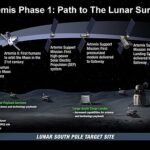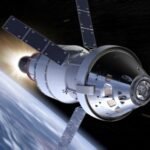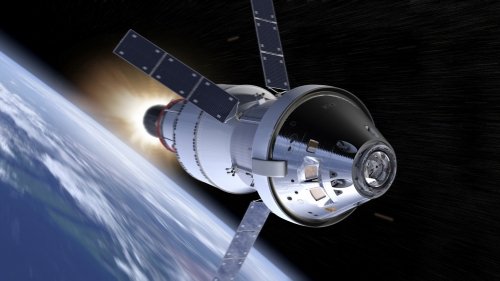As Earth’s natural resources dwindle and the demand for rare materials grows, humanity is looking to the stars for solutions. Asteroid mining, once the stuff of science fiction, is now a serious topic of discussion among scientists, engineers, and entrepreneurs. The idea of extracting valuable resources from asteroids could revolutionize industries, fuel space exploration, and even address some of Earth’s most pressing challenges. But is asteroid mining feasible? And what would it mean for the future of our planet?
In this article, we’ll explore the concept of asteroid mining, its potential benefits and challenges, and the technologies being developed to make it a reality. From the science behind asteroids to the ethical implications of space resource extraction, we’ll delve into whether space rocks could indeed fuel the future of Earth.
What Are Asteroids, and Why Mine Them?
Asteroids are rocky remnants left over from the formation of the solar system about 4.6 billion years ago. They orbit the Sun, primarily in the asteroid belt between Mars and Jupiter, but some come closer to Earth. These space rocks vary in size, composition, and structure, making them a treasure trove of valuable resources.
Types of Asteroids
- C-Type (Carbonaceous): Rich in water, carbon, and organic compounds.
- S-Type (Silicaceous): Contain metals like nickel, iron, and cobalt.
- M-Type (Metallic): Composed mostly of nickel and iron, with traces of precious metals like platinum and gold.
Why Mine Asteroids?
- Abundance of Resources: Asteroids contain vast amounts of metals, water, and rare minerals.
- Sustainability: Mining asteroids could reduce the environmental impact of terrestrial mining.
- Economic Potential: The value of resources in a single asteroid could be in the trillions of dollars.
- Space Exploration: Asteroids could provide fuel and materials for missions to Mars and beyond.
The Science of Asteroid Mining
Asteroid mining involves locating, extracting, and processing materials from asteroids. While the concept is straightforward, the execution is incredibly complex. Here’s how it could work:
1. Prospecting and Identification
The first step is identifying suitable asteroids. Scientists use telescopes and spacecraft to analyze their size, composition, and orbit.
- Examples: NASA’s OSIRIS-REx mission to asteroid Bennu and Japan’s Hayabusa2 mission to Ryugu.
2. Extraction Techniques
Several methods have been proposed for extracting resources from asteroids:
- Surface Mining: Collecting loose regolith (surface material) using robotic arms or scoops.
- Subsurface Mining: Drilling into the asteroid to access deeper resources.
- In-Situ Resource Utilization (ISRU): Processing materials on the asteroid to produce fuel or other usable products.
3. Transportation
Once extracted, resources must be transported back to Earth or to other locations in space. This could involve:
- Returning to Earth: Sending materials back using capsules or spacecraft.
- Space-Based Refineries: Processing materials in orbit and delivering them to space stations or lunar bases.
Potential Benefits of Asteroid Mining
Asteroid mining could have far-reaching benefits for both Earth and space exploration.
1. Economic Opportunities
A single asteroid could contain billions of dollars’ worth of precious metals like platinum, gold, and rare earth elements. These materials are essential for electronics, renewable energy technologies, and other industries.
2. Reducing Environmental Impact
Terrestrial mining is often environmentally destructive, causing deforestation, pollution, and habitat loss. Asteroid mining could provide a more sustainable alternative.
3. Fueling Space Exploration
Asteroids contain water, which can be split into hydrogen and oxygen to create rocket fuel. This could enable the establishment of space fuel depots, making long-duration missions more feasible.
4. Addressing Resource Scarcity
As Earth’s population grows, the demand for resources is outpacing supply. Asteroid mining could help meet this demand and reduce geopolitical tensions over resource access.
Challenges and Risks
While the potential benefits are immense, asteroid mining also presents significant challenges.
1. Technological Hurdles
- Robotics and Automation: Mining in microgravity requires advanced robotics and autonomous systems.
- Energy Requirements: Extracting and processing materials in space demands significant energy, which is currently limited.
2. High Costs
The initial investment for asteroid mining is enormous, with no guarantee of returns. Launching spacecraft, developing mining equipment, and transporting materials are all expensive endeavors.
3. Legal and Ethical Issues
- Ownership: The Outer Space Treaty of 1967 states that no nation can claim sovereignty over celestial bodies, but it doesn’t address private ownership of resources.
- Environmental Concerns: Mining asteroids could disrupt their orbits, potentially creating hazards for Earth.
4. Space Debris
The process of mining and transporting materials could generate space debris, increasing the risk of collisions with satellites and spacecraft.
Current Efforts and Future Prospects
Despite the challenges, several companies and organizations are actively working on asteroid mining technologies.
1. Planetary Resources
Founded in 2009, Planetary Resources aimed to develop spacecraft for prospecting and mining asteroids. Although the company faced financial difficulties, it pioneered the concept of commercial asteroid mining.
2. Deep Space Industries
Another early player in the field, Deep Space Industries focused on developing technologies for asteroid prospecting and resource extraction. It was acquired by Bradford Space in 2019.
3. NASA’s OSIRIS-REx Mission
NASA’s OSIRIS-REx mission successfully collected samples from asteroid Bennu in 2020, demonstrating the feasibility of retrieving materials from asteroids.
4. Luxembourg’s Space Resources Initiative
Luxembourg has positioned itself as a hub for space resource exploration, offering funding and legal frameworks to support asteroid mining ventures.
The Future of Asteroid Mining
The future of asteroid mining depends on technological advancements, regulatory frameworks, and economic viability. Here are some potential developments:
1. Space-Based Infrastructure
Establishing refineries, fuel depots, and manufacturing facilities in space could make asteroid mining more practical and cost-effective.
2. Public-Private Partnerships
Collaboration between governments and private companies could accelerate progress and share risks.
3. International Cooperation
Global agreements on the ownership and use of space resources will be essential to avoid conflicts and ensure equitable access.
4. Technological Breakthroughs
Advances in robotics, propulsion, and energy systems could make asteroid mining more feasible and efficient.
Ethical and Environmental Considerations
As we venture into asteroid mining, it’s crucial to consider the ethical and environmental implications.
1. Preserving Celestial Bodies
Asteroids are remnants of the early solar system and hold scientific value. Mining them could destroy valuable information about our cosmic origins.
2. Avoiding Exploitation
Ensuring that the benefits of asteroid mining are shared equitably and do not exacerbate existing inequalities.
3. Minimizing Space Debris
Developing sustainable practices to prevent the creation of space debris and protect the space environment.
Conclusion: A Bold Vision for the Future
Asteroid mining represents a bold vision for the future—one where humanity harnesses the resources of the cosmos to fuel progress on Earth and beyond. While the challenges are significant, the potential rewards are equally immense. From addressing resource scarcity to enabling interplanetary exploration, asteroid mining could play a pivotal role in shaping the future of our species.
As we continue to explore the possibilities, it’s essential to approach this endeavor with caution, responsibility, and a commitment to sustainability. By doing so, we can ensure that asteroid mining becomes a force for good, benefiting not only our planet but also the generations to come.







